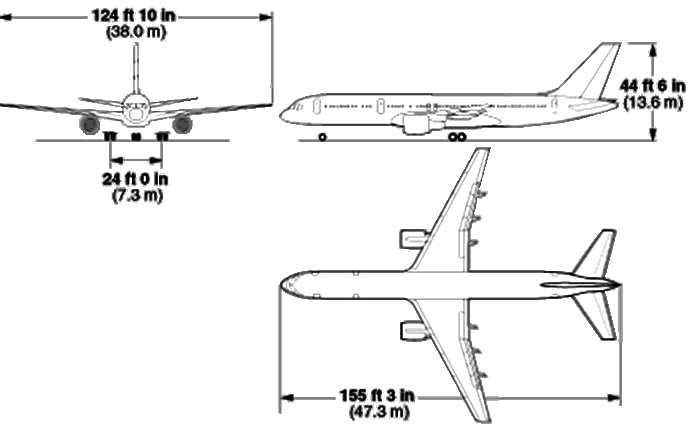
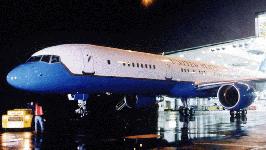
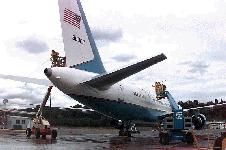
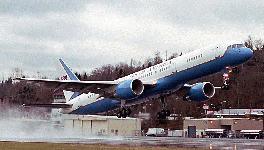
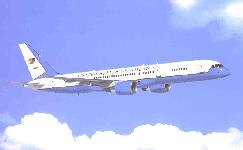



The C-32A, configured for 45 passengers and 16 crew, is designed for a 4,150 nautical mile mission, roughly the distance from Andrews to Frankfurt, Germany. The aircraft is also Stage III noise level compliant. Inside the C-32A, communications take a front seat. The vice president, heads of state and other decision-makers can conduct business anywhere around the world using improved telephones, satellites, television monitors, facsimiles and copy machines. Additional equipment on the C-32As includes Tacan military navigation equipment, a military Identification Friend/Foe transponder, a UHF satellite communications radio, secure voice and data transmission capability, and a passenger flight information display system that airs videos and broadcasts real-time global positioning on a moving world map. Increased storage was also a priority when the designer included large storage areas in the overhead bins in the cabin and the cargo compartments below. Like many high-standing aircraft it's easy to see under and around the C-32A -- an important security factor for protecting the plane and its passengers. Heading the safety equipment list is the Traffic Collision Avoidance System that gives advance warning of possible air crashes.
The 757-200 is equipped with two wing-mounted Pratt & Whitney 2040 engines, producing 41,700 pounds static thrust each. The aircraft is far more fuel efficient and quieter than the 707-based C-137s they are replacing. Each engine of the C-32A has 40,000 pounds of thrust, compared to the VC-137 engine that delivers 14,000 pounds. Yet, the C-32A's high-bypass-ratio engines, combined with an advanced wing design, help make the plane one of the quietest, most fuel-efficient jetliners in the world.
Specifications | |
|
Length |
155 feet 3 inches (47.3 m) |
|---|---|
|
Wingspan |
124 feet 10 inches (38.0 m) |
|
Tail height |
44 feet 6 inches (13.6 m) |
|
Engines |
Pratt & Whitney PW2000 |
|
Maximum takeoff weight |
220,000 pounds (99,790 kg) |
|
Fuel capacity |
11,526 U.S. gallons (43,625 L) |
|
Maximum range |
3,950 nautical miles; 4,550 statute miles; 7,315 kilometers |
| Altitude capability | 39,000 feet (11,885 m) |
|
Cruise speed
|
Mach 0.80 |




